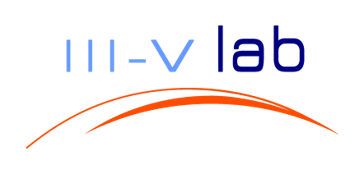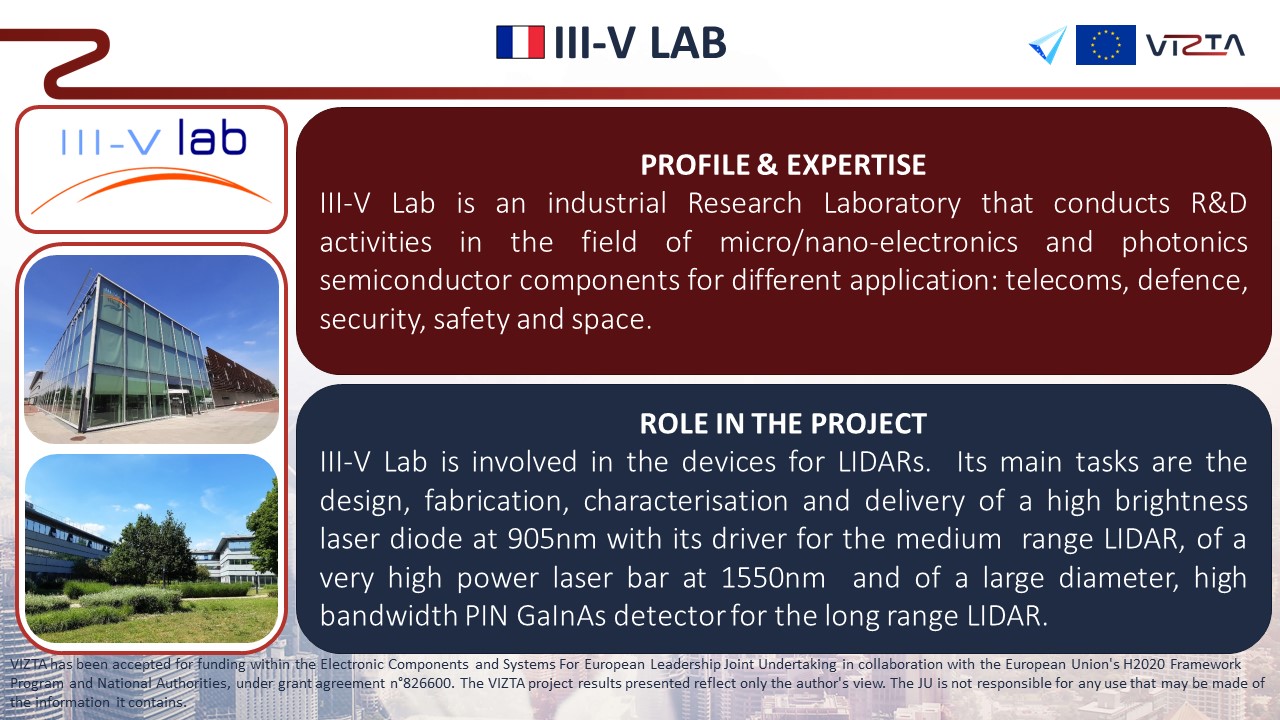Profile & expertise
III-V Lab is an industrial Research Laboratory created in 2004 by Alcatel-Lucent (now Nokia) and Thales. Nokia is one of the leaders in communication technologies (mobile, fixed, IP and Optics technologies), applications and services, while Thales is a major electronic systems company acting in areas such as defence, aerospace, airlines security and safety, information technology, and transportation. In 2010, III-V Lab was extended with the entrance of the “Laboratoire d’Electronique et de Technologie de l’Information” (LETI) from CEA in the capital, as well as 20 people from the LETI, opening the way to hybrid III-V on Si integration. CEA is one of the largest public research organisations in France, acting mainly in the fields of low carbon energies, information technologies, health technologies, large research infrastructures and global security.
Under the guidance of its members, III-V Lab conducts R&D activities in the field of micro/nano-electronics and photonics semiconductor components for different application: telecoms, defence, security, safety, space etc.
These activities cover the following topics:
- Near- and mid-infrared opto-electronic devices (semiconductor lasers, and optical amplifiers, photodetectors) for a wide range of applications;
- Photonic Integrated Circuits (PICs) for telecoms;
- Micro/nano-electronic circuits for telecoms: 40Gb/s, 100Gb/s and over;
- GaN microelectronic circuits for microwave and power applications;
- High resolution infrared imagery sensors.
Located in Palaiseau, near Paris, its facilities include 4,000 m2 of clean rooms. Its staff is composed of around 90 permanent Researchers, plus around 25 PhD Students.
III-V Lab masters the different steps needed to manufacture III-V components from design to characterisation:
- Design and modelling: electro-optical modelling for DFB, DBR and FP lasers, modulators and photo-detectors, electrical and thermal modelling of RF and power components;
- Epitaxy: multi-4’’ MOVPE, MBE and GSMBE, including re-growth, selective area growth (SAG), “butt-joint” and buried heterostructures. Arsenide, phosphide, nitride and antimonide III-V material families;
- Process: metal and dielectric layer deposition, electronic lithography, stepper, etching (IBE, RIE, ICP, e-beam…);
- Characterisations and reliability evaluation: test and aging test-benches for electronic components and lasers;
- Modules: design and fabrication of power RF electronic circuits and modules, lasers / photo receiver modules (pigtailed or not), PIC modules.
III-V Lab has also the capacity to produce limited quantities of epitaxial wafers, components, modules or subsystems. Such capacity is particularly adapted to address in a flexible way the rapid evolution of the market, offering to its members or partner industrial companies an early access to the components for their system development and even preliminary deployment; in a second step, depending on the market evolution and quantities required, the technology is either spun off or transferred to an industrial company with larger production capacities. Recent examples:
- Transfer of QWIP and InGaAs Focal Plane Arrays technologies to Sofradir (December 2012);
- Creation of the mirSense start-up company to which the Quantum Cascade Laser technology was transferred (April 2015);
• Creation of the Almae Technologies spin off company in October 2015 to produce new-generation laser components supporting very high-speed access over optical fibre.


